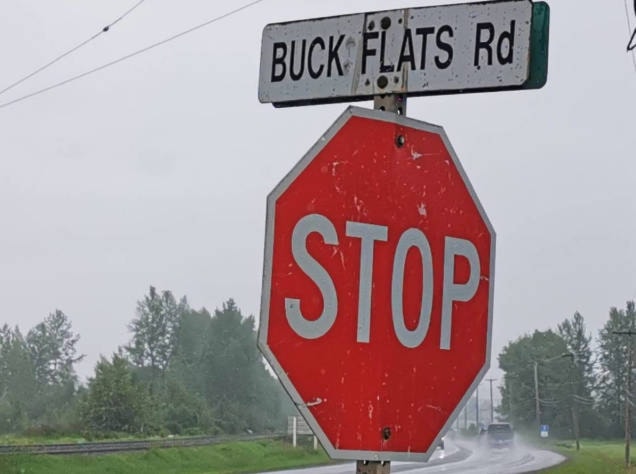Wood logged from a project in the Buck Flats area to reduce the chance of a wildfire sweeping into town has mostly been used locally.
Approximately 50,000 cubic metres was logged with roughly three-quarters being of sawlog quality and subsequently shipped and sold to Canfor.
“The vast majority of the wood has gone to the local Canfor mill or [Houston] Pellet Plant,” said Scott Rowsell from ProTech Forest Resources, the Telkwa-based company managing the project for the District of Houston.
“There was a portion of the wood that was not suitable for either of those facilities, so it was sent to local post and rail and firewood plants.”
Canfor was also able to ship a quantity out as pulpwood.
The project was prompted by a 2018 District of Houston study which outlined the risk as signficant, with the potential for prevailing winds from the southwest driving a wildfire toward the District. Logging the area would remove wood that would then fuel a wildfire as it got closer to the District.
Work is being financed with a $1 million grant from the Forest Enhancement Society of B.C., the provincial agency which provides money for a variety of projects ranging from reducing wildfire risks to reducing the cost of shipping waste wood to pellet-making facilities.
The area of concern takes in approximately 1,300 hectares from Buck Flats Road to the Morice River with the area under Pro-Tech’s management involving approximately 400 hectares. BC Timber Sales, another provincial agency, is responsible for the rest of the area.
Rowsell called the District of Houston project complex for the planning, preparation and carrying out of its various parts.
Because this is meant to provide protection from wildfire there’s to be a permanent 150-metre wide fireguard stretching approximately 9 kilometres.
“That’s going to be there forever and now, every three to five years, the BC Wildfire Service will go in there and treat that area for any brush growing,” said Rowsell.
The rest of the area will be replanted by using several species with an eye to reducing future wildfire severity and that work is planned for next year.
“We will be planting roughly 120,000 paper birch and 200,000 lodgepole pine trees in various combinations over 266 hectares,” said Rowsell.
The original reforestation plan was to plant all decidous trees, replacing the conifers that had been there, because they are less prone to the kind of wildfire in which fire can ‘crown’ and leap from treetop to treetop.
But that has now changed through planning sessions with experts at the provincial Northwest Fire Centre so that a mixture of the decidous birch and lodgepole pine conifers will be planted instead, said Rowsell.
The resulting mixed forest will have more of a shade canopy provided by coniferous lodgepole pine than if the trees were all birch or deciduous. It means that in hotter years of clear weather, the sun won’t penetrate down as much and dry out the forest floor, creating ready-made fuels.
“That’s what the current thinking is, so we won’t have condititions such as dry brush,” Rowsell said.
The mixed forest concept is being further refined so that 75 per cent of the stands closest to properties or roads will be birch, meaning the chances of a crown fire will be reduced because of the smaller percentage of pine trees being closer together.
“This mix will be heavier to the deciduous to increase the likelihood of a crown fire dropping down to the ground where it can be fought by ground crews,” said Rowsell.
Away from property or roads, the mix will shift to 75 per cent deciduous birch, breaking up pine stands and thus the potential for an advancing crown fire, he added.
Getting ready for replanting has meant working with the BC Wildfire Service and the Northwest Fire Centre to prepare burning plans for fibre for which no other use could be found and other needed work.
“The last six months has been busy with managing the overstory removal, developing the silviculture plan for the stand that will replace the area after other ground fuel treatments are completed, planning the burning program with the BC Wildfire Service and Northwest Fire Centre, preparing burn plans, preparing treatment prescriptions and developing a select list of contractors for contract opportunities,” said Rowsell.
All of that preparation points to a busy spring and summer, provided the weather cooperates, of planned larger-area broadcast burns of material for which no use could be derived while ensuring there are appropriate fireguard measures in place.
“There will also be additional manual and mechanical wildfire fuel treatment activities throughout the project area this summer. These are areas where it is not appropriate to use broadcast burning for the treatment,” said Rowsell.
